Hands up who was glued to the first episode of season three of Outlander this week? But were you eagle-eyed enough to spot the rather splendid silver travelling canteen used by Bonnie Prince Charlie on the battlefield at Culloden?
This intricate prop was lovingly recreated by the Outlander team after seeing the original in the National Museum of Scotland. Thought to be a 21st birthday present from a Jacobite supporter (although probably not, as claimed on telly, the Prince’s father) the canteen is emblazoned with symbols denoting his position – fit for a Prince indeed!
For those of us who think those plastic wine glasses that screw together are classy, the picnic set is in a league of its own, coming complete with a wine-taster, cruet (a small container for salt, pepper, oil, or vinegar – and yes, I had to Google that), a teaspoon and marrow scoop, a corkscrew, a nutmeg grater and a knife and fork.

Charles brought the canteen with him to Scotland in 1745. After his disastrous defeat at Culloden in 1746, the victorious government commander, William, Duke of Cumberland, captured the canteen and gave it to one of his aides, George Kepple, and it remained in his family until 1963.
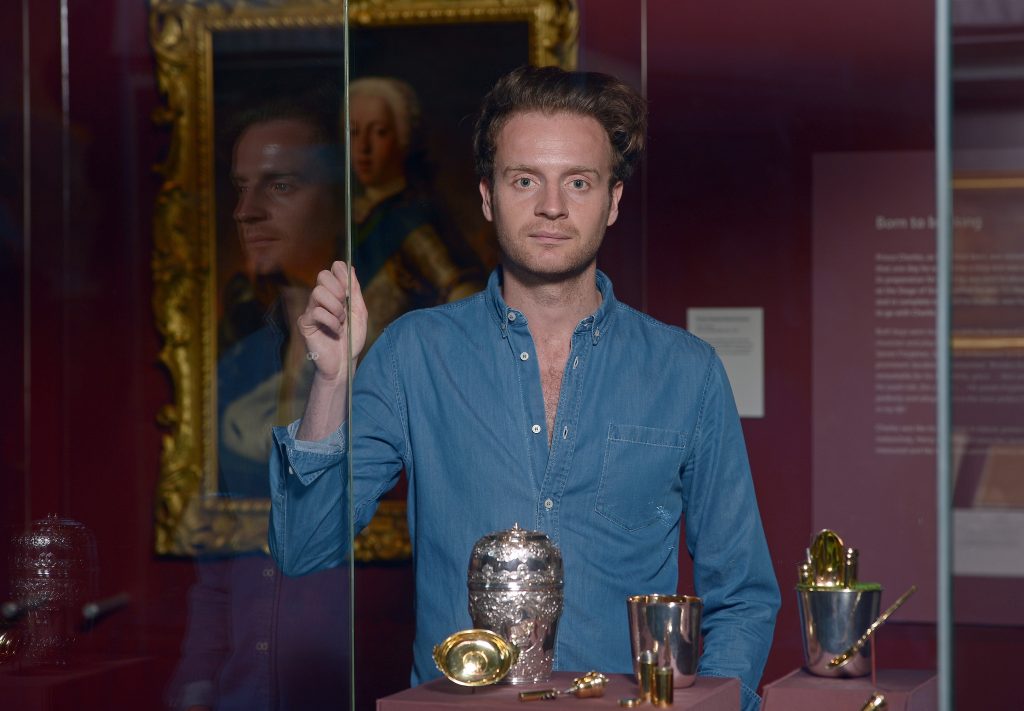
But the canteen is not the only museum object to make an appearance on screen.
Replicas of some of the museum’s most famous objects, the Lewis chessmen, appeared in the first ever Harry Potter film, Harry Potter and the Philosopher’s Stone.
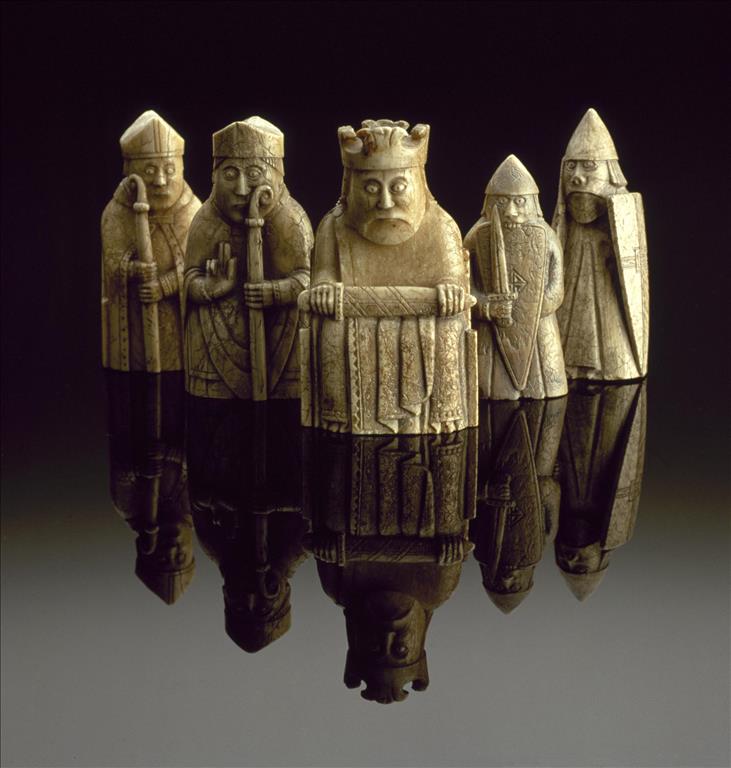
Unearthed on Lewis in 1831, the chessmen are probably the best-known archaeological find from Scotland. Yet they’re also a bit of a mystery – who buried them on the beach at Uig, and why? We may well never know.
Nevertheless, if you fancy making like Ron and Harry and challenging yourself to a game with the Lewis chessmen, you can buy your own replica set here in our shop!
Another popular museum mystery are the infamous Arthur’s Seat coffins. These miniature caskets, complete with carved corpses, were discovered by a gang of schoolboys in 1836 and have baffled historians ever since. Who concealed them in their secret sepulchre? Are they evidence of witchcraft? Or linked to the murders carried out by Burke and Hare?
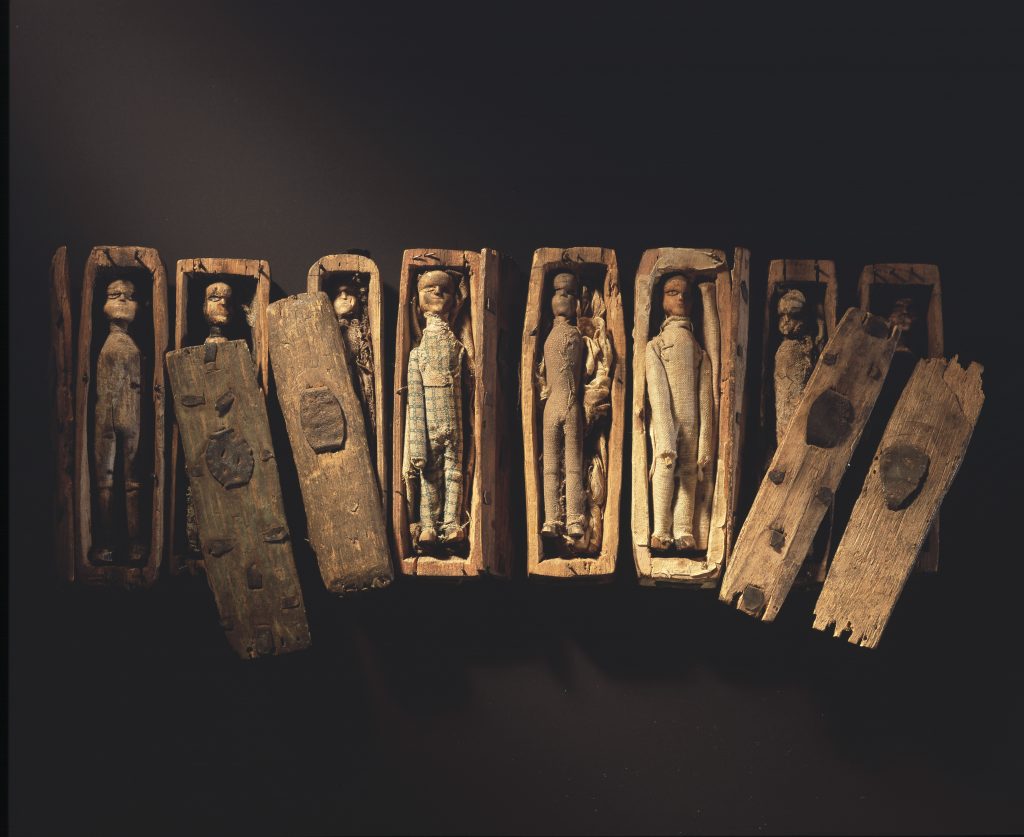
It’s no wonder that these cryptic coffins piqued the interest of author Ian Rankin, who gave them a starring role in his Inspector Rebus thriller The Falls.
“As soon as I saw them,” he explains in the introduction to the novel, “I knew they would make a great story, especially as no one had come up with an incontrovertible interpretation of their meaning.”
Up in our Scotland a Changing Nation gallery on Level 6, you’ll find the replica coffins used in the TV version of The Falls. Interestingly, they’re quite a bit bigger than the originals!
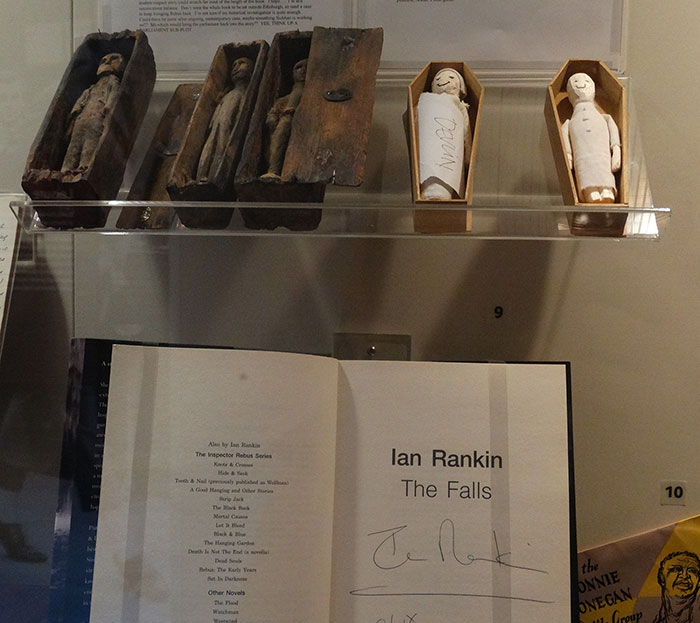
Here you’ll also spot a signed poster and script from one of Edinburgh’s most notorious big screen moments, Trainspotting, donated to the Museum by the film’s star Ewan McGregor. The Museum, however, does not appear in this scurrilous tale of drug abuse, sex and violence, oh dear me, no.
The last stop on our silver screen tour of the National Museum of Scotland is the Early People gallery, where researchers for the Disney Pixar movie Brave found inspiration for Merida’s Pictish world. Artefacts which made it into the movie, albeit in animated form, include this horse harness, which dates from 1st-2nd centuries AD, and a cauldron, used to make a witch’s potion in the film.
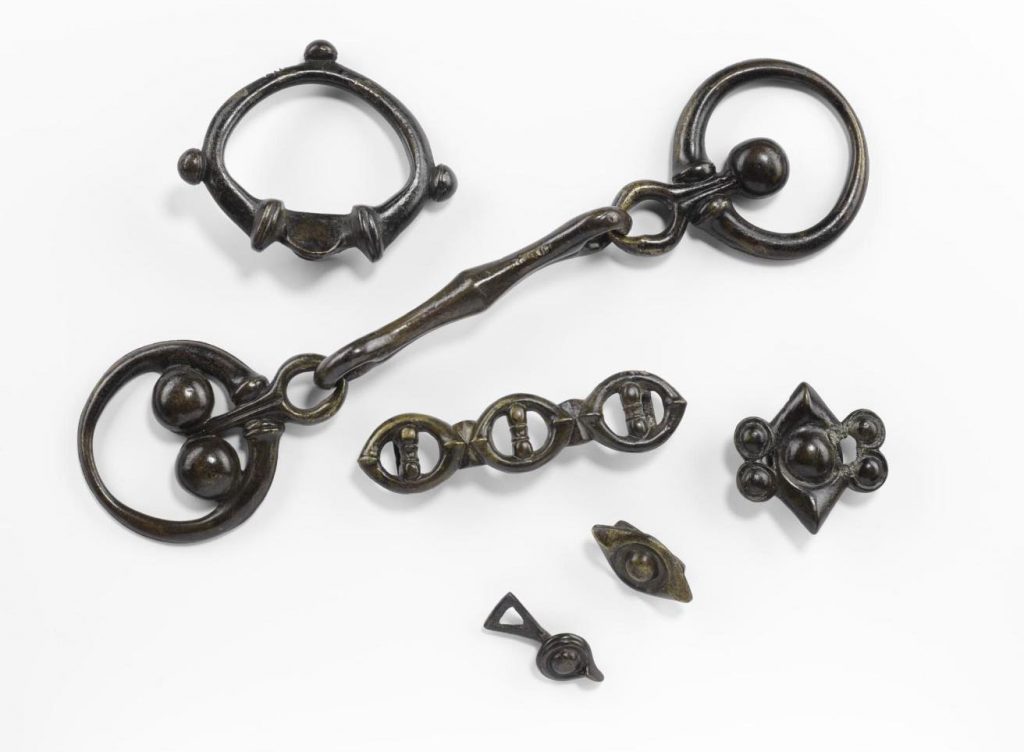
A replica of our carnyx, the fearsome Iron Age war trumpet used in battle by Celtic tribes across Europe, appears in the 2010 film Centurion, which is set during the dying days of the Roman Empire in Britain. The carynx on the film’s soundtrack was played by musician John Kenny, who has performed at the Museum on many occasions. You can see him in this film from our Celts exhibition.
For more Edinburgh film locations, check out this guide from Edinburgh.org. You can also see many of the locations used in Outlander on our Jacobite trail.
